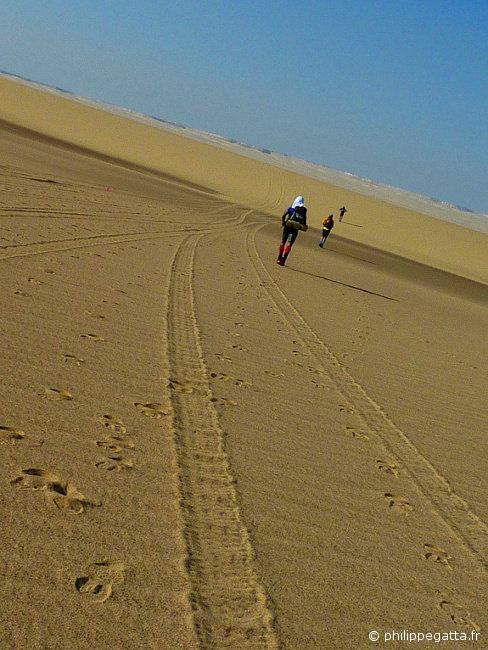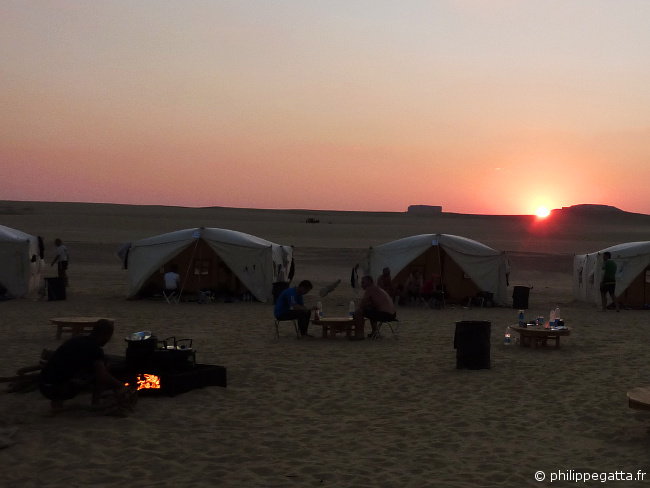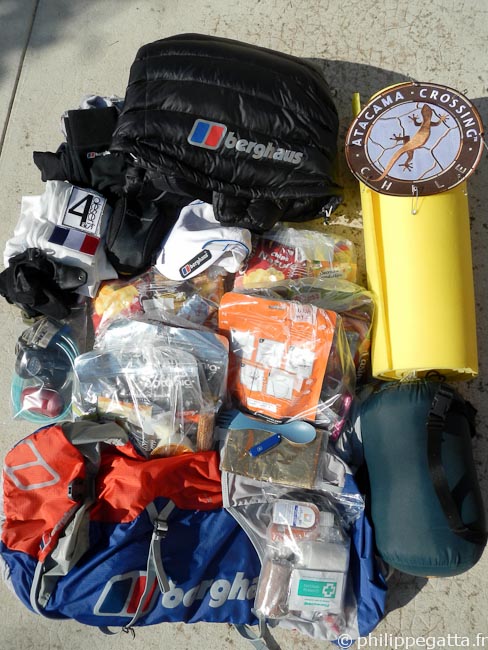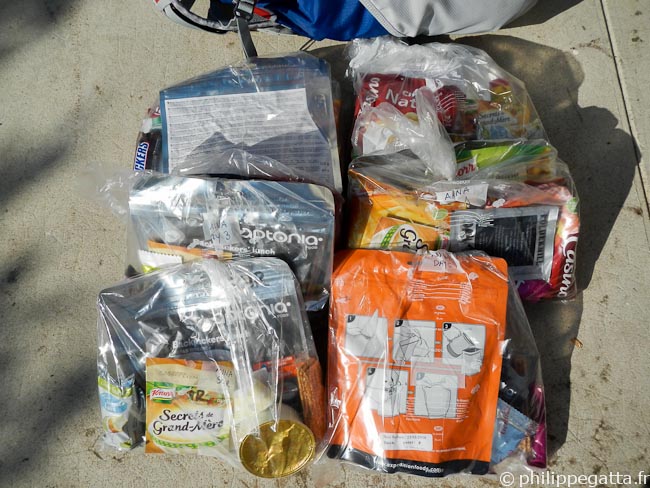Last weekend Anna and I ran 20 km with 10 kg pack as the last “long” training before the Atacama Crossing race in Chile. This week and next will be much lighter with one last interval training and a few more jogging, still with 10 kg weight.
When the race will start on March 4th, I will have run total of 1,000 km and 30,000 meters of elevation gain since I started the specific training for this race in November. Except a tendinitis on the left foot, I feel rather well and long to start the race. Anna will reach a total of 750 km in 4 months which is probably her new record.

Previous 4 deserts race in Sahara (© P. Gatta)
The format of the race is pretty much the same as the Marathon des Sables and the Sahara Race, so roughly 6 Marathons in 5 days, a rest day and 15 km.
Atacama Crossing
As the Atacama Crossing race is self-supported, which means that we will have to carry all our clothes, sleeping bag, mandatory equipment, medical/safety kit and 7 days of food in our pack. The race organizer will only provide us with water (10 to 13 liters per day) and the tents for the nights. So choosing the right kit and food is a real challenge as everything has to fit in a relatively small pack. The goal is also to keep to the weight of the pack below 9 kg, without water. So investing in an electronic scale to chase every gram is mandatory. 🙂

A night in the camp during the Sahara Race (© P. Gatta)
Anna and I spent some time this weekend to review everything one more time. The main differences with the Marathon des Sables and the Sahara Race are that the nights are cooler in Atacama so we have to bring more clothes, and the ground is sometimes rocky at the camp so we have to bring a mattress too. Last but not least, the race will take place between 3500 m and 2400 m of elevation but we can’t do much about it…

Kit and food for the Atacama Race (© P. Gatta)
The second challenge has been to choose the food. Based on the rules, we have to bring 14,000 calories but that’s not enough for me. For the Marathon des Sables I brought 22,475 calories (4.47 kg), for the Sahara Race I brought 21,925 calories (4.48 kg). For the Atacama Crossing I will bring 21,435 calories (4.2 kg). Unfortunately I have to take less food to compensate the extra clothes and mattress that I have to take. Anna will bring 18,075 calories (3.625 kg). It has been even harder for her to decide how much food to take as she hasn’t done any race like that before.
The other difficulty was to choose the right balance between Protein, Carbohydrates and Fat. Here is the breakdown: 16.6% of Protein, 57% of Carbohydrates and 26.5% of Fat. We also had to find food that can resist 7 days at temperatures up to 40°C, that can fit in a small pack without being totally smashed, that is light (freeze dried food) but still is pleasant to eat as the race lasts 7 days. Just look at your trolley out of the supermarket when you shop a week worth of food and try to fit that in a small back pack.

The food for the Atacama Race (© P. Gatta)
Finally Anna’s pack weights 8.625 kg and mine 8.975 kg, both without water.